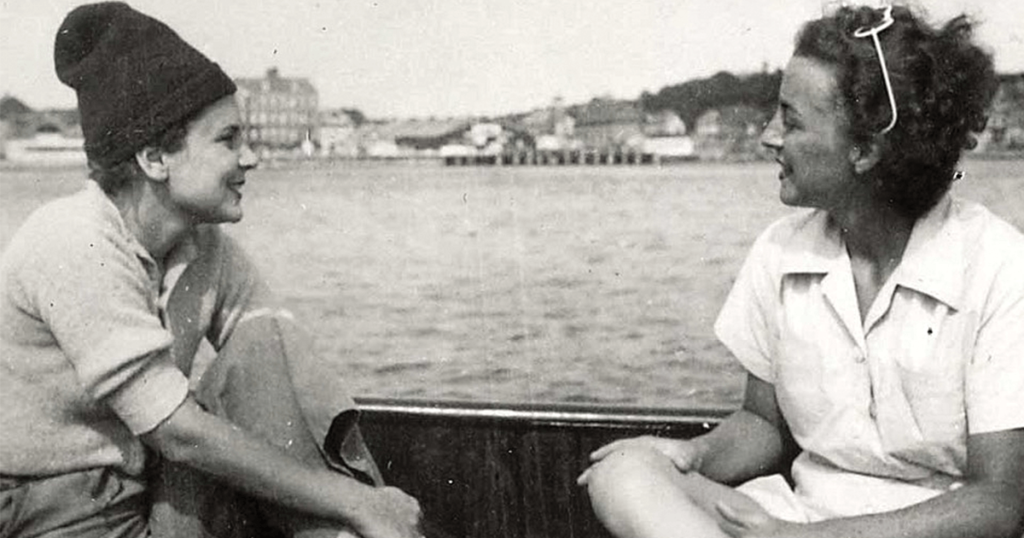
Love Unknown: The Life and Worlds of Elizabeth Bishop by Thomas Travisano; Viking, 432 pp., $32
What is the relation between a poet’s life and art? A young Elizabeth Bishop offered the following advice: “The best way to understand Shelley is to read part of his biography and then read his poems that were written during the same period of his life.” Thomas Travisano’s study of Bishop, Love Unknown, implicitly invites us to follow this advice. To get the most out of his book, it’s best to keep a copy of Bishop’s works at hand and to consult each poem that Travisano mentions in the course of recounting her life.
Yet there’s an essential problem with biographies of writers. Travisano’s detailed account has filled in many gaps in my knowledge of Bishop, but it’s her work that matters. How much can we really learn about her poetry from studying her life? This is not to say, of course, that the personal lacks interest. I particularly relished the chapters on Bishop’s high school and college friendships, largely extracted from the luminous letters she wrote at the time. And if you want to know about Bishop’s forebears on both sides of her family, this is certainly the book to turn to.
But when Travisano, the founding president of the Elizabeth Bishop Society, attempts to relate the poems to sometimes murky biographical details, the problem emerges. Regarding the late-discovered love poem “It Is Marvellous to Wake Up Together,” he writes, “It is hard to be certain whether this poem describes Bishop’s life with [Marjorie] Stevens or with [Louise] Crane. … The identification with Stevens may be supported by the fact that Bishop told Foster [her therapist] that she and Stevens were most often morning lovers.” How much does such conjecture avail us? The identity of the “you” (and there is barely a “you,” rather a “we”) need not be known for readers to make sense of and thrill to the poem. Only a few pages before this speculation, Travisano points out that Bishop shared with Ernest Hemingway “a sense of the value of what is left unsaid.” One might have hoped, then, that the biographer would respect the thicket of boundaries and reticences in Bishop’s work. Love, apparently, can’t be allowed to remain unknown.
Travisano is good on places, always a crucial element in Bishop’s work. He helps us see how passages from her letters morph into poems; he gives a clear sense of her sojourns in Key West and Brazil, Seattle, and Boston. It is astonishing (as he repeatedly points out) that the orphaned, uprooted, sickly little girl became an urbane, cosmopolitan artist. Can any biography explain that transformation? This one doesn’t.
But Travisano’s research flags, or fails to help, when it comes to people. Bishop’s friendship with Robert Lowell, well documented in their letters and sensitively discussed by David Kalstone in his 1989 study Becoming a Poet, is one thing. Bishop herself has told us much about her friendship with Marianne Moore in her memoir, Efforts of Affection. But Bishop’s lovers, who are masked in her poems, deserve to stay masked. To be told that Marjorie Stevens was anxious or Roxanne Cumming was unstable doesn’t explain anything. Travisano doesn’t quote from their letters, which have not survived, and the way he characterizes those that Stevens wrote, “conversational and detailed, with much emphasis on the efforts of day-to-day living,” fails to whet the appetite for more. Aren’t Bishop’s own (justly famous) letters also detailed and conversational?
Inspired by Bishop’s work, Travisano tunnels into her life and loves. But his appetite for facts, and his patient accumulation of them, are the wrong tools for understanding the poems—poems that are, if not transparent, then clear enough that readers have read and loved them for decades without the need for commentary. Under the glare of facts, the poems shrink or melt. Comments such as one regarding “The Armadillo” do not help: “This violent closing has been subtly and effectively prepared as the poem builds gradually from delicacy toward a surprising violence.” This sentence is one of several where editorial intervention would have helped.
The nature of lyric poetry is to be both personal and elusive. All those pronouns! But to whom they refer, even that unnamed person’s gender, is often inscrutable. Does it matter? We’ll never know exactly who (singular or plural) inspired Shakespeare’s sonnets or Sappho’s love lyrics, and our ignorance doesn’t diminish the power of these poems. Surely, then, we can enjoy “Varick Street” without knowing who (Travisano worries away at the lovers’ identity—“perhaps even the same two, Bishop and Marjorie Stevens”) is lying in “our bed.”
Elizabeth Bishop belonged to a generation of reticent women, women who didn’t wear their marital or domestic or erotic troubles on their sleeves. Whether the wife of a celebrated and often errant husband was Anne Morrow Lindbergh, Pat Nixon, or my own mother (Bryn Mawr ’35, four years Bishop’s junior), these women, including the writers among them, kept their own counsel. That Bishop wrote poems that gradually and courageously encroached on the landscapes of her traumatic childhood and her difficult emotional life is already well known. Let’s leave some of the details in the weeds.
For all Bishop’s challenges, her life was in many ways triumphant, a fact all of her biographers recognize. Thinking about that life now, though, I can’t help being struck by a matter that has less to do with Bishop’s generation than with the advantages of her socioeconomic class and race, which everyone who writes about her seems to take for granted. Very likely I’ve missed some salient piece of recent Bishop scholarship or commentary, but so far that impression stands.
Lovers of Bishop’s work will certainly want to read Love Unknown. But they should also consult the other studies of her life and work, such as those by David Kalstone, Brett Millier, or Lorrie Goldensohn. And of course, there are the poems.

